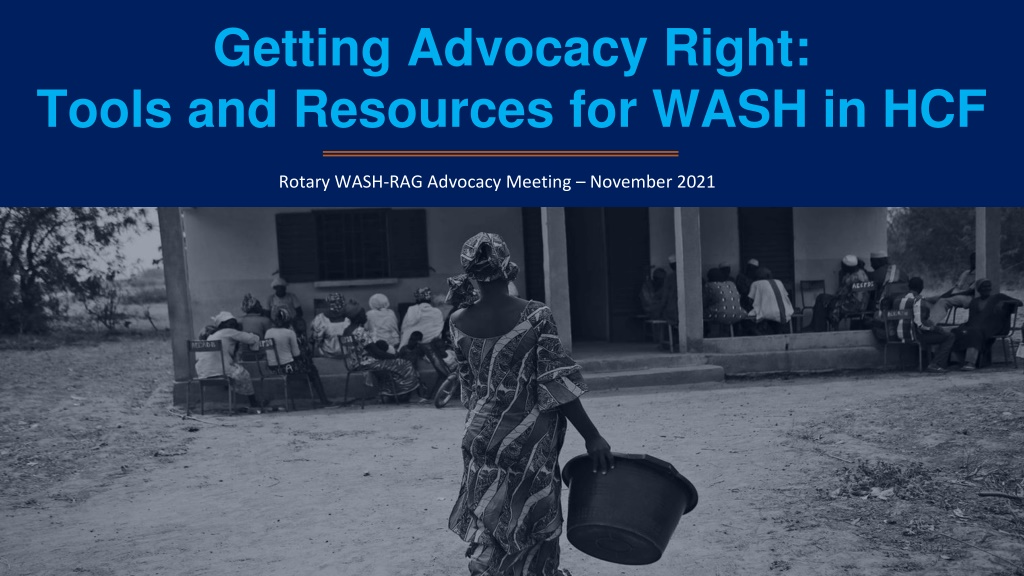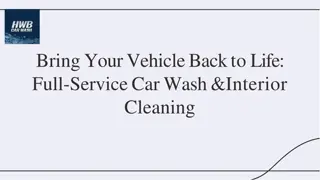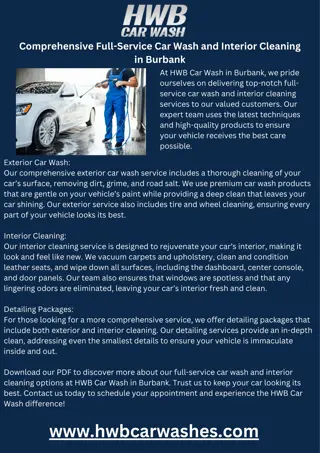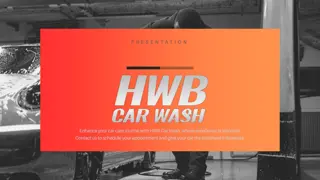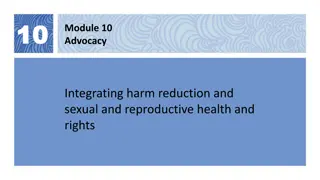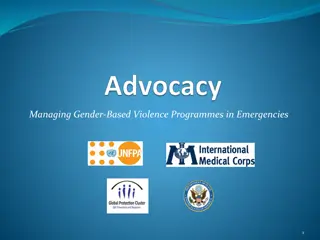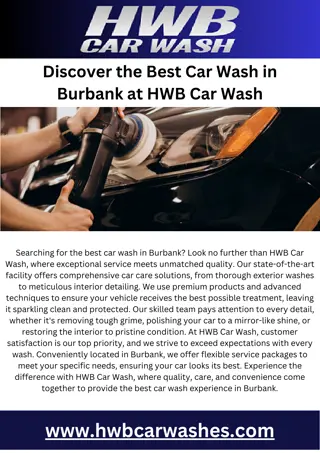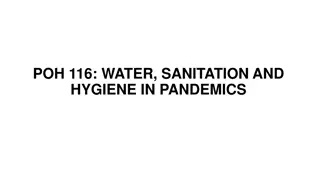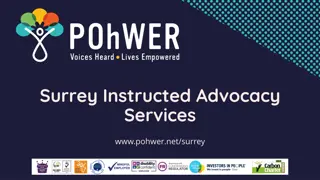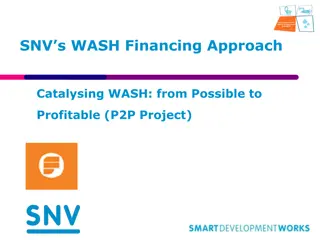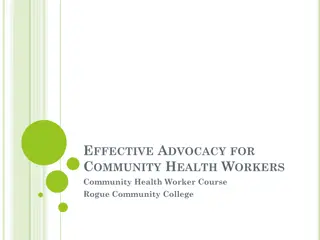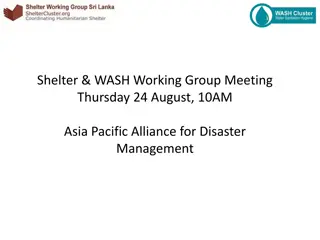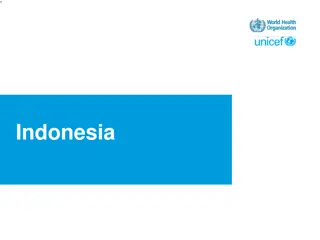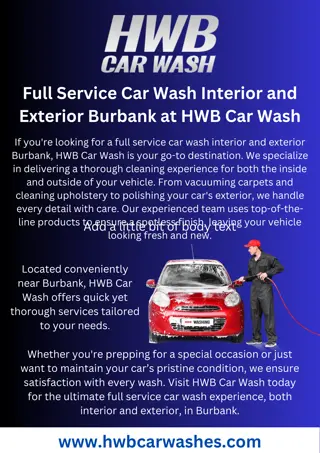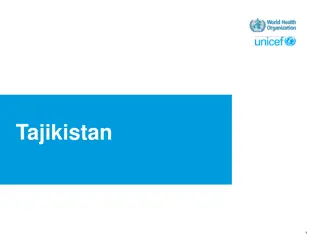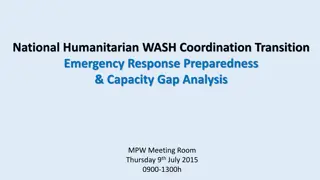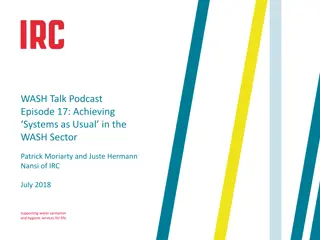Advocacy Strategies for WASH in Healthcare Facilities
Empower your advocacy efforts with tools and resources for Water, Sanitation, and Hygiene (WASH) in healthcare facilities. Learn about operational and governance advocacy, use the WASH in HCF Advocacy Toolkit, create advocacy goals, and target audiences effectively. Explore advocacy messaging, messengers, activities, and monitoring strategies to drive positive change. Elevate your advocacy at national, subnational, and local levels to advance WASH initiatives comprehensively.
Download Presentation

Please find below an Image/Link to download the presentation.
The content on the website is provided AS IS for your information and personal use only. It may not be sold, licensed, or shared on other websites without obtaining consent from the author. Download presentation by click this link. If you encounter any issues during the download, it is possible that the publisher has removed the file from their server.
E N D
Presentation Transcript
Getting Advocacy Right: Tools and Resources for WASH in HCF Rotary WASH-RAG Advocacy Meeting November 2021
Advocacy Advocacy is the deliberate process, based on demonstrated evidence, to directly and indirectly influence decision makers, stakeholders and relevant audiences to support and implement actions that contribute to your cause. (UNICEF, 2010) There are two distinct types of advocacy: 1. Operational Advocacy to achieve discrete aims (i.e. Individual project objectives) 2. Governance Advocacy to improve or change institutional and accountability arrangements
Advocacy is Educating Influencing Encouraging Championing with a goal of bringing in others to help us make change that we cannot affect ourselves.
WASH in HCF Advocacy Toolkit The WASH in HCF Advocacy Toolkit offers a simple framework to advocate for WASH in HCF to a variety of stakeholders It can be useful to raise awareness, advocate for policy change, allocate funding, drive demand, or increase prioritization of WASH in HCF. While many will be advocating to governments, you may find reason to advocate to other parties including local communities, clinicians, or specific sectors (global health, WASH).
Advocacy Roadmap 1. Goals/Objectives 2. Target Audience 3. Messages 4. Messengers 5. Opportunities, Resources and Risks 6. Activities/Tools 7. Monitoring, Evaluation and Learning
1. Desired advocacy goals and objectives What do you want to achieve? Goal: Overall vision for WASH in HCF Global goal: 100% WASH in HCF coverage by 2030 Specific goal may vary based on context/country Objective: Measurable action needed to achieve your goal. You likely will require multiple advocacy objectives to achieve your goal. Why is WASH in HCF a problem? What is needed to fill that gap? What are the objectives needed to fill that gap?
Advocating Throughout the System You can direct your advocacy efforts toward any level within the system. National Level - Ex: Ministry of Health or Ministry of Water - Activities: Developing guidelines, monitoring, setting national budget Subnational Level - Ex: District Health Office - Activities: Implementing guidelines, requesting budget Local Level - - Ex: Healthcare Facility Activities: creating hygiene culture, reinforcing behaviors, ensuring operations and maintenance
Example advocacy goals and objectives PROBLEM: WASH infrastructure is not maintained at the health center GAP: There is no budget for operations and maintenance and to address repairs OBJECTIVE: To add line item(s) in the annual facility budget that is specific to maintaining WASH services
2. Target audience To whom? Target audience: the decision-maker who has the power to make your change happen Who must you reach in order to achieve your goal? Who has the power to make change happen? This audience may be at the global, national, subnational, or community level and may be a specific person, entity, or a grassroots audience, depending on your objective Example Target Audience: Government, communities of practice, faith-based organizations, private sector, local community
3. Messages What? Message: Messages are the core of your advocacy and include both the importance of WASH in HCF and your specific ask of the target audience.
4. Messengers By whom? Messenger: the person or group who will carry your message to the target audience Messengers do not necessarily have to be within the decision- maker s immediate circle nor a specific person There may be overlap between target audiences and messengers Example Messengers: Those who are particularly compelling for WASH in HCF, such as: clinicians (doctors, nurses, and midwives), mothers, health and WASH organizations, etc.
5. Opportunities, resources and risks Opportunities Are there opportunities to elevate your issue? (e.g. global awareness days) Is now a good time to advocate? Are there messages you can use to leverage your advocacy? Are there groups doing similar work? Resources/Capacity/Budget What resources are at your disposal? (e.g. social media) What is your current capacity? What is your budget? Risks Are there potential challengers to your issue? Why? SWOT Analysis
6. Activities and tools Advocating, influencing, educating Governments/Institutions/Experts Engaged Partners General Public Policy studies Research papers Working papers Policy reports Policy-oriented journals Conference presentations Less formal presentations at one-on-one meetings or lobbying Presentations to working groups or public hearings Policy briefs, memos and fact sheets Newsletters Policy reports Op-ed articles in newspapers Letters to newspapers Ads, banners, posters, t-shirts, stickers Written Radio and TV programs Public meetings and hearings Speeches to the public Oral Documentary videos Advocacy-based advertising Photos Email campaigns Dedicated advocacy websites or pages Social Networking platforms Texts/messaging apps Visual Digital Dedicated advocacy websites
7. Monitoring, evaluation and learning Is it working? To continue to be effective, advocacy must also be adapted. Be sure to reflect on your strategy and adjust accordingly. Example Measures of Progress: Health facility identifies a WASH focal point District health office allocates funding for WASH Integration of WASH indicators into Health Management Information Systems (HMIS)
Advocating at the Local Level Target audiences AND messengers may include: District health officials (health, WASH) Healthcare workers (doctors, nurses, midwives) Healthcare facility IPC/WASH focal point Healthcare administrators Community leaders Community WASH and/or health boards Community members
Advocating at the Local Level Examples of Advocacy Objectives: Raise awareness of WASH expectations at the healthcare facility and increase patient demand for good WASH services Increase budget for WASH (facility and/or district level) Train staff on WASH/IPC guidelines and protocols Identify a WASH/IPC focal point (facility and/or district level) Monitor availability of WASH as well as staff and patient satisfaction with WASH services Encourage engagement with the community WASH/health board Use funds for COVID on WASH improvements Hire cleaners
What Now? Work with your fellow Rotarians, partners, and community members to identify root causes for the lack of sustainability of WASH services in the healthcare facilities where you work. Determine which of those challenges you have the ability to address. Use the advocacy toolkit to develop a strategy. Reflect on your progress and adjust as needed. Advocacy is not easy! But it is the most important tool we have in ensuring sustainable solutions. Be patient, be creative, and be persistent.
Thank you! For more information on WASH in HCF: www.WASHinHCF.org For Questions/Comments/Feedback: Lindsay Denny ldenny@emory.edu
